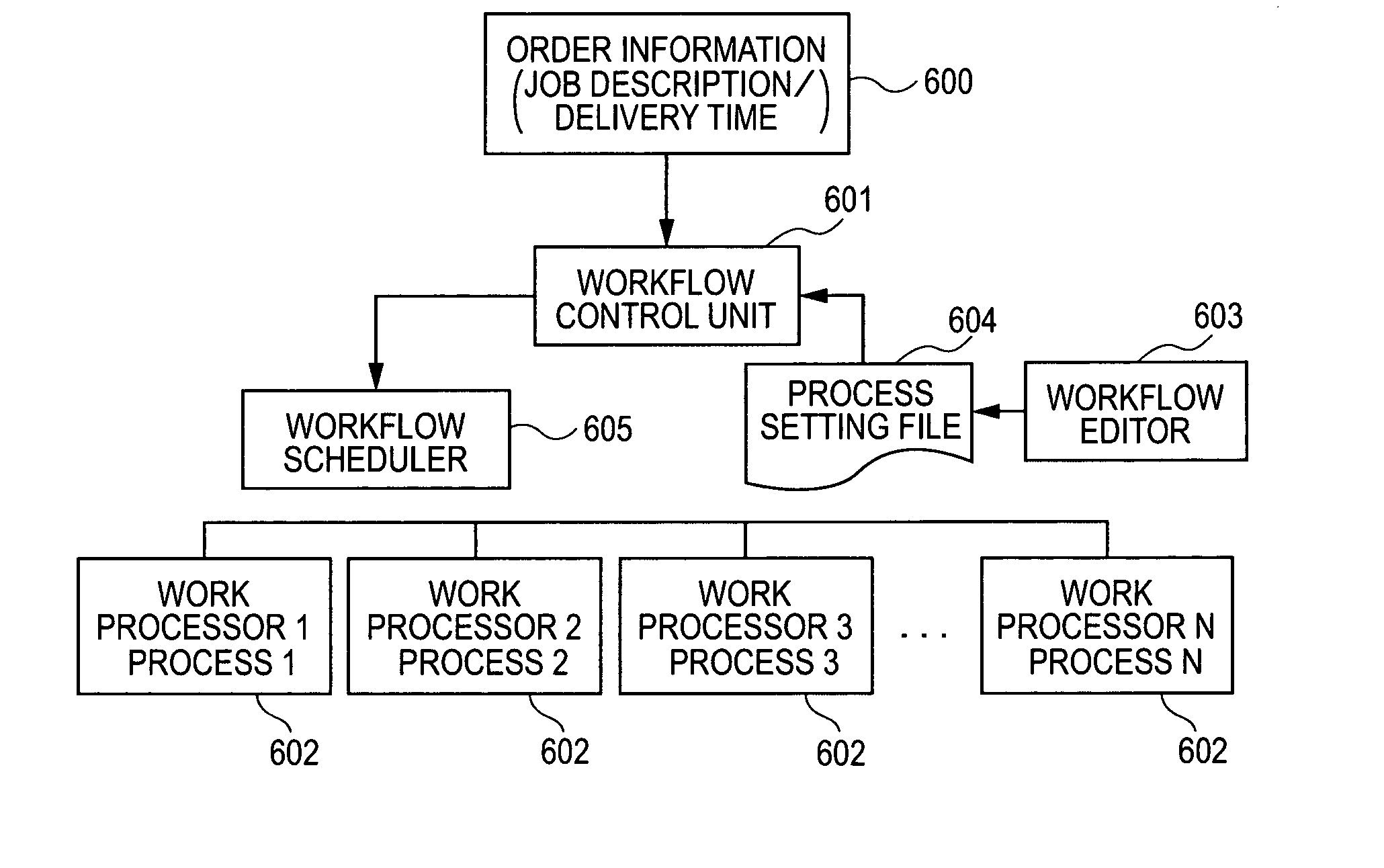Information processing apparatus, process control method, and program thereof
a technology of information processing apparatus and process control method, applied in the direction of digital output to print units, electric programme control, instruments, etc., can solve the problems of high cost disadvantage, difficult plate correction, and inability to perform tasks according to conventional methods, etc., to achieve the effect of increasing the speed and resolution of electrophotographic printers
- Summary
- Abstract
- Description
- Claims
- Application Information
AI Technical Summary
Benefits of technology
Problems solved by technology
Method used
Image
Examples
first exemplary embodiment
[0037] Exemplary embodiments of the present invention are described below with reference to the drawings. FIG. 1 is a block diagram showing an example of a topological architecture of a print system in general according to a first exemplary embodiment of the present invention.
[0038] The exemplary system includes one or more end user environments 101 and a print on demand (POD) site environment 102 connected thereto over the Internet. The end user environments 101 include a customer who can place a print order. Customers can place an order for a print job with the POD site environment 102 and check the status of the print job to the POD site environment 102 from the end user environments (here, an end user environment A and an end user environment B) via respective client personal computers (PCs).
[0039] The POD site environment 102 includes a process control section 103, a prepress section 104, a digital print section 105, and a postpress section 106. The process control section 10...
second exemplary embodiment
[0115] A second exemplary embodiment of the present invention is now herein described. It is noted that only the differences between the first and second exemplary embodiments are described below. In the second exemplary embodiment, a schedule before Job 2 is input is shown in FIG. 22. The main difference between the second exemplary embodiment of FIG. 22 and the first exemplary embodiment is that Processes 3 and 4 in Job 1 in FIG. 22 have an unmovable attribute in place of a movable attribute. In the second exemplary embodiment, a procedure of scheduling Job 2 is described below with reference to the flowcharts of FIGS. 15A and 15B, as in the first exemplary embodiment.
[0116] When Job 2 is input, a process identifier i for identifying a process by using an ordinal number is initialized to one (step S1501). In step S1502, Process 1 (Folder Input process) is scheduled. Process 1 is scheduled at the earliest time slot in time to which Process 1 is assignable at the present time. In o...
PUM
 Login to View More
Login to View More Abstract
Description
Claims
Application Information
 Login to View More
Login to View More - R&D
- Intellectual Property
- Life Sciences
- Materials
- Tech Scout
- Unparalleled Data Quality
- Higher Quality Content
- 60% Fewer Hallucinations
Browse by: Latest US Patents, China's latest patents, Technical Efficacy Thesaurus, Application Domain, Technology Topic, Popular Technical Reports.
© 2025 PatSnap. All rights reserved.Legal|Privacy policy|Modern Slavery Act Transparency Statement|Sitemap|About US| Contact US: help@patsnap.com



